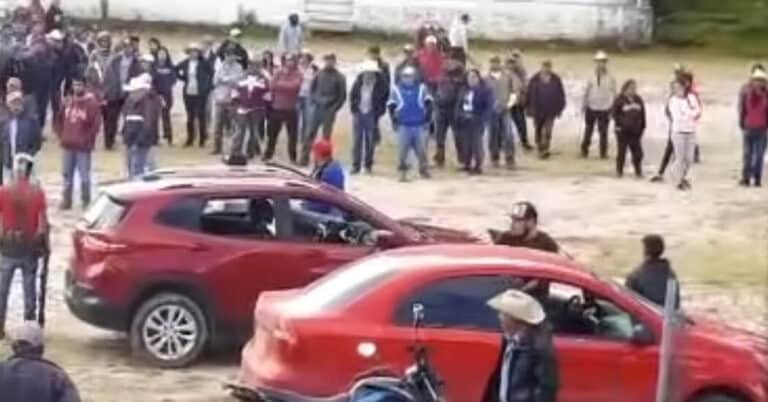An armed confrontation between gunmen and members of a small farming community in the State of Mexico has left at least 14 dead, according to state authorities on Saturday. The authorities attributed the violence to a failed extortion attempt by gangs, which was met with resistance from the residents.
Authorities stated that among the casualties from Friday’s clash were four residents of the Texcapilla community and 10 individuals suspected of belonging to a cartel. Seven people were injured, and there are more reported missing.
Delfina Gómez, the governor of the State of Mexico where Texcapilla is located, stated in a press conference on Saturday morning that she had requested increased security in the area.
“These events do not paralyze us, on the contrary, they reaffirm our determination to improve security conditions in our beloved state,” she said. “We will continue working to prevent incidents like this from happening again.”
Andrés Andrade Téllez, the Secretary of Security for the state, stated that on Thursday, the military had received reports of armed men belonging to a cell of the La Familia Michoacana cartel demanding payments from delegates of different communities about 50 kilometers from Texcapilla.
The violence that occurred the following day, captured in a video independently verified by The New York Times, took place at the local sports field. Dozens of residents, armed with machetes and hunting rifles, approached the armed men as tensions escalated. The first shots were fired, some fled, while others pursued and attacked the alleged members of the criminal group with machetes.
It was an example of how resentment can motivate people to fight back against the organized crime groups that torment them daily.
“Communities are doing this out of frustration, out of desperation,” said Sandra Ley, program coordinator at Mexico Evalúa, a research institute on public security policies. “From a position of ‘no more’.”
Extortion has become increasingly common in Mexico as criminal groups have shifted from drug trafficking to a territory-based extraction model, according to Falko Ernst, a senior analyst at the International Crisis Group, an organization that promotes conflict prevention.
Extortion rates reached record levels last year, with an average of nearly eight reported extortion cases per 100,000 inhabitants, according to data from state prosecutors and the National Institute of Statistics and Geography. The previous government’s highest rate was five cases per 100,000 inhabitants.
“There have been many reactions to this. Some more organized, others more spontaneous,” said Ernst. “But especially under this government, territorial control by these groups has been given a greater margin of maneuver, greater passivity through the ‘hugs, not bullets’ security strategy.”
Since taking office in 2018, President Andrés Manuel López Obrador has promised that his government would address the root causes driving criminality. However, his efforts so far have not succeeded in reducing Mexico’s extraordinary levels of violence or weakening the growing power of cartels, even as the military and National Guard are deployed throughout the country.
“There has been no social crime prevention policy,” Ley stated. “Organized crime is winning.”
The outbreak of violence in Texcapilla was possibly the result of tensions that had been building up as the locals fell victim to criminal groups, according to experts. However, animosity towards cartels is not exclusive to this location.
“Hopefully, we won’t be caught off guard by something like this in other equally besieged places that are fed up with this situation,” Ley said. “It can’t be that we reach this level of tension until we have 14 dead.”


